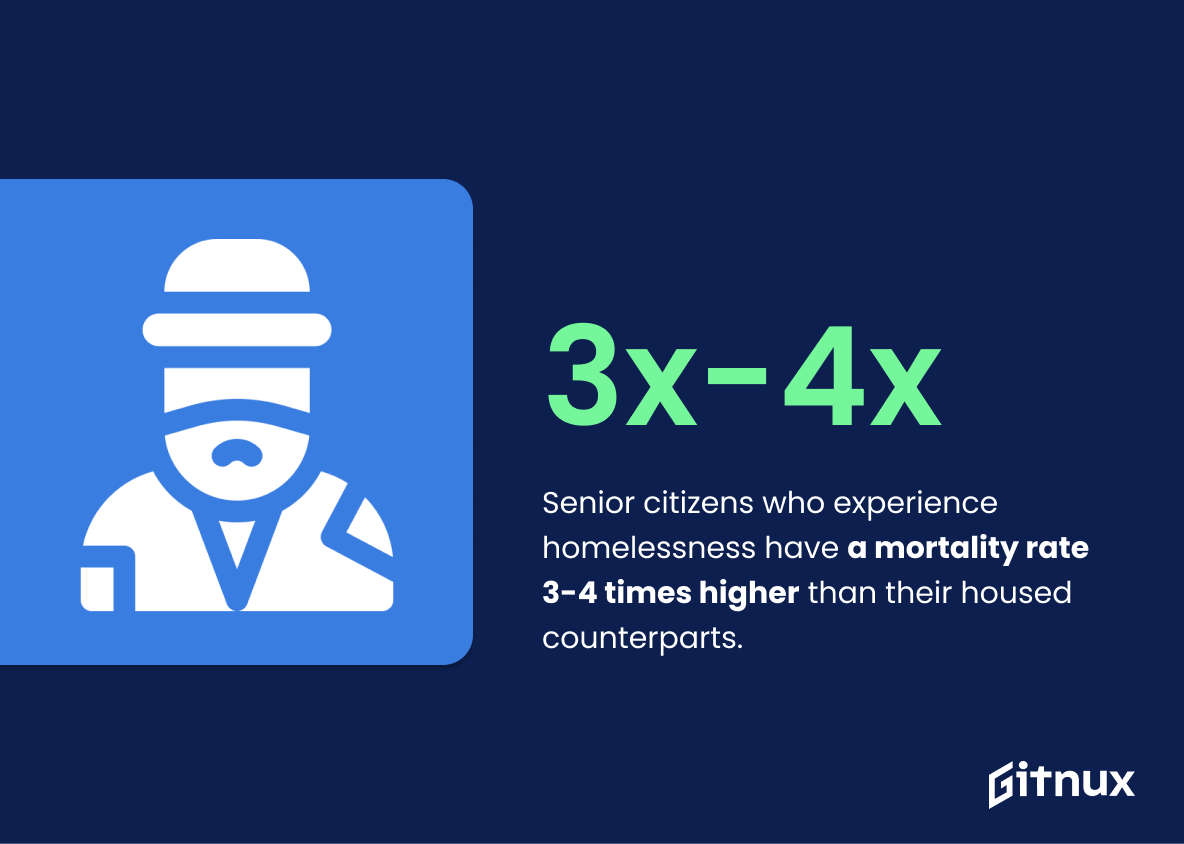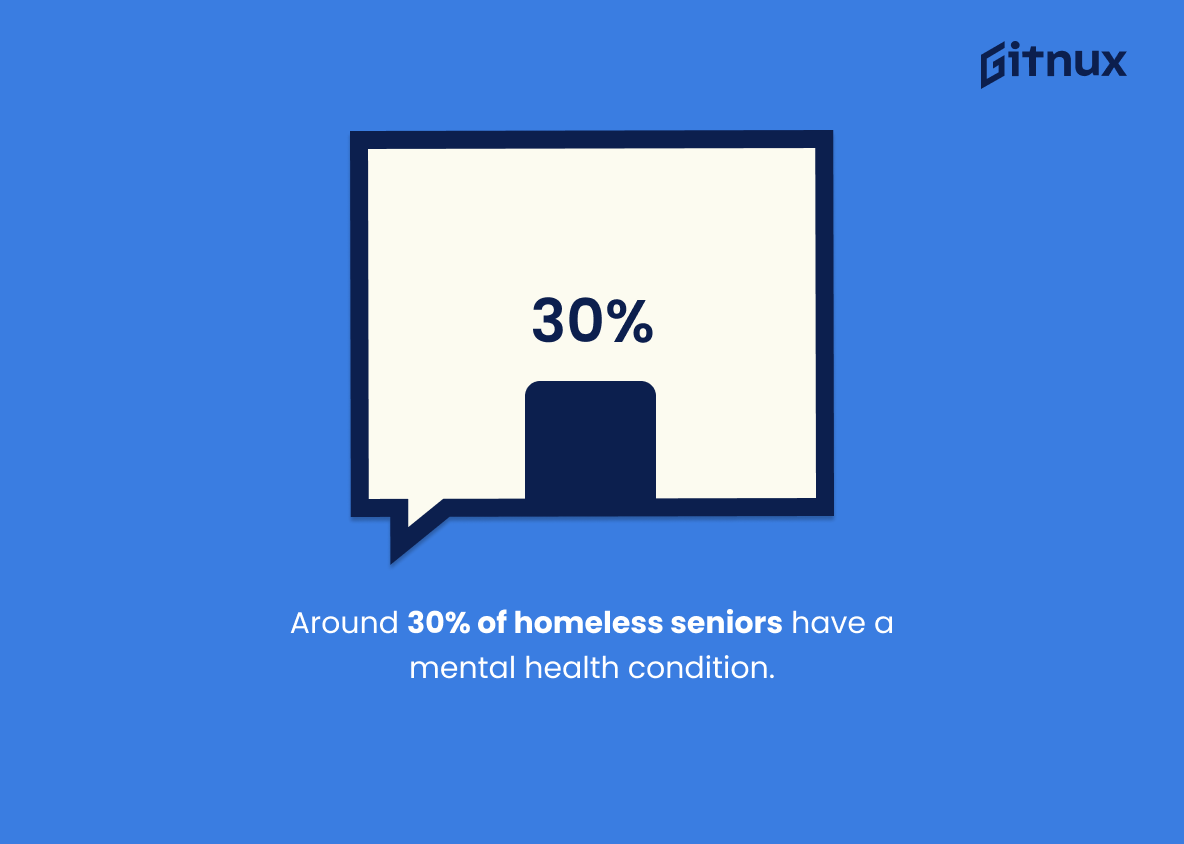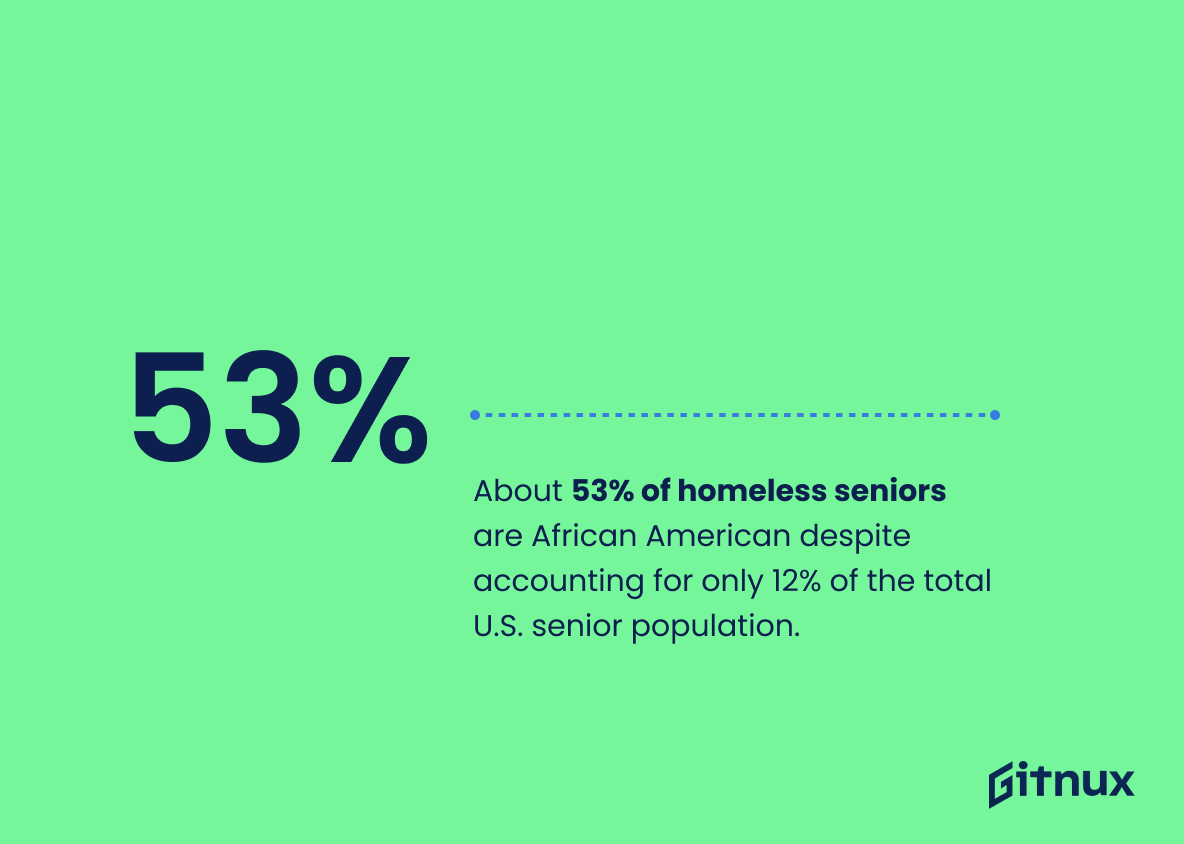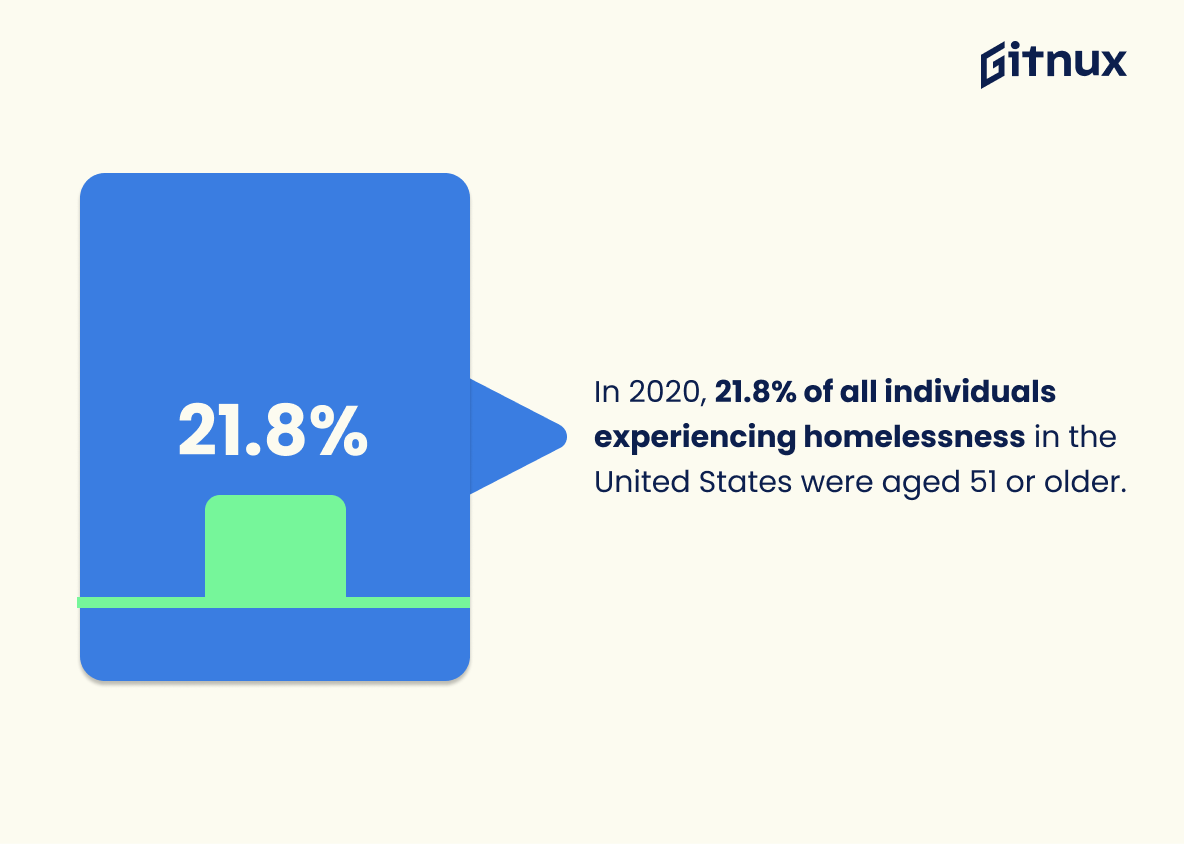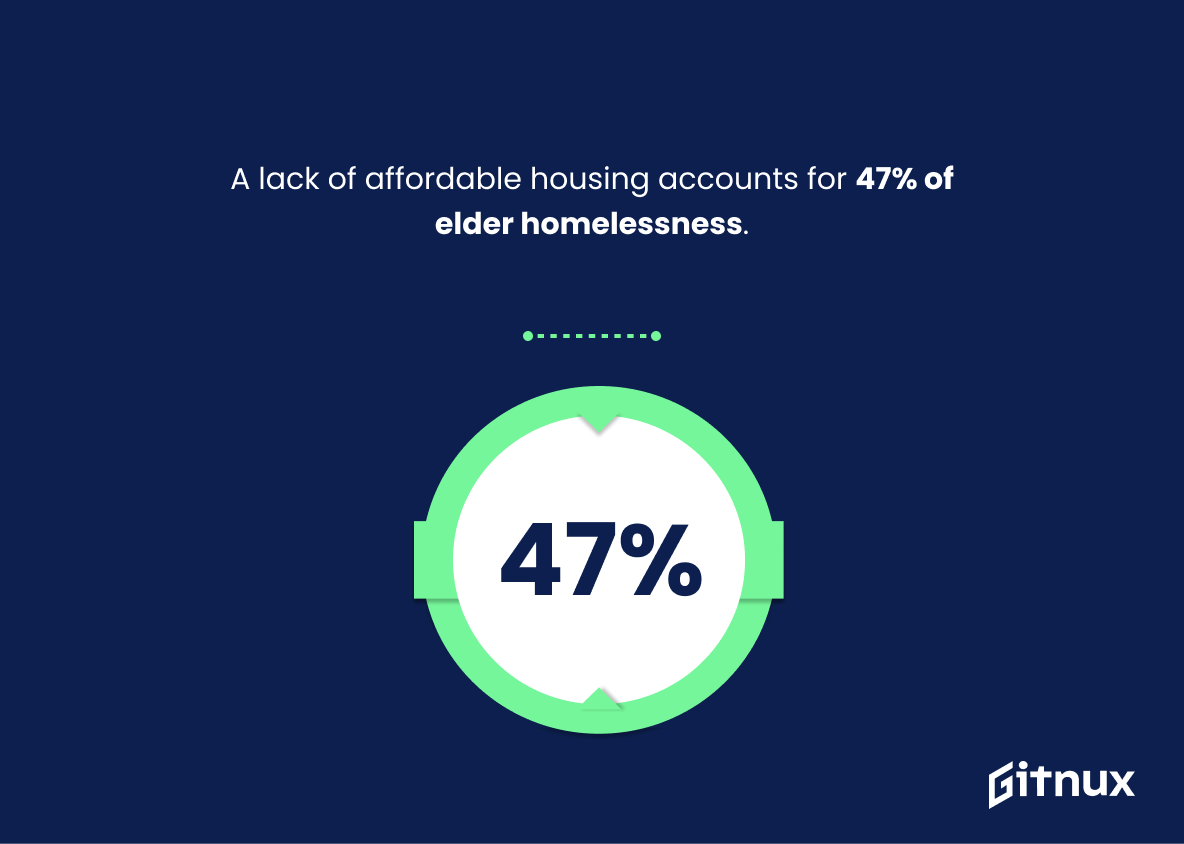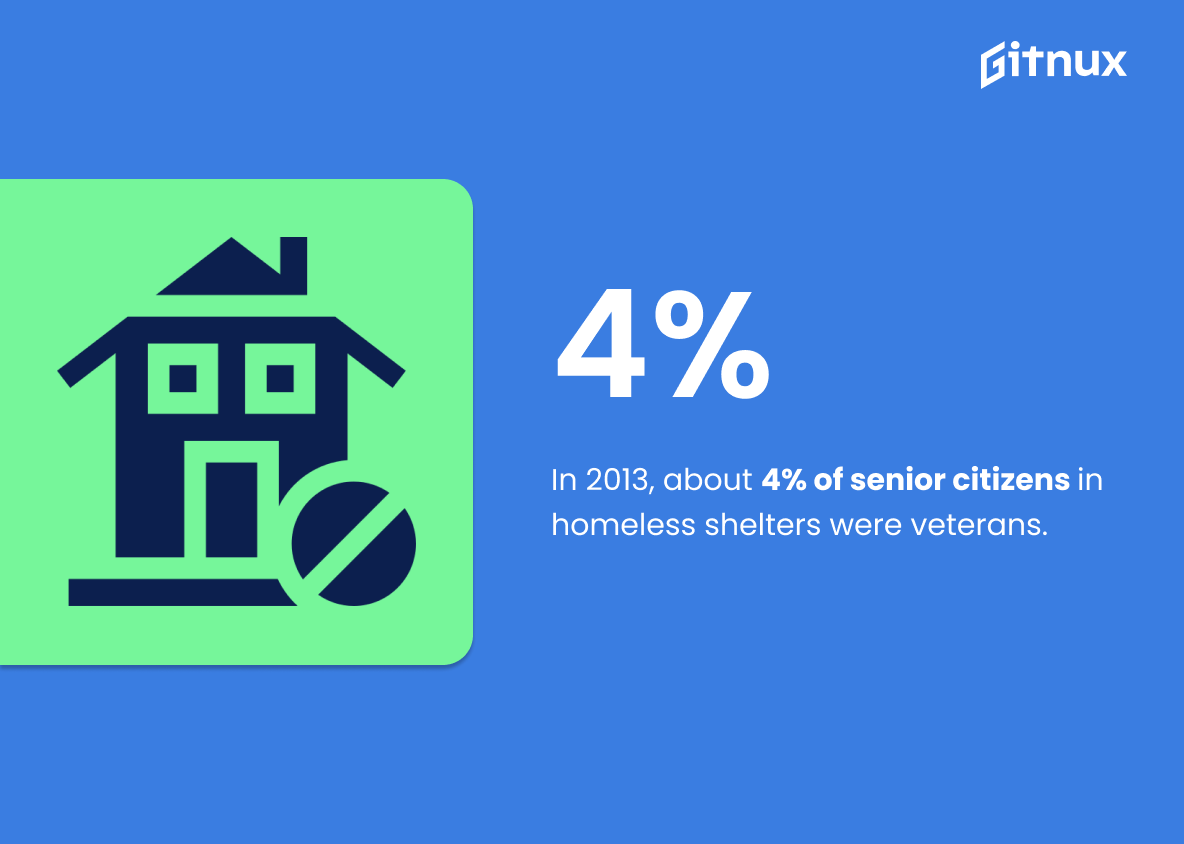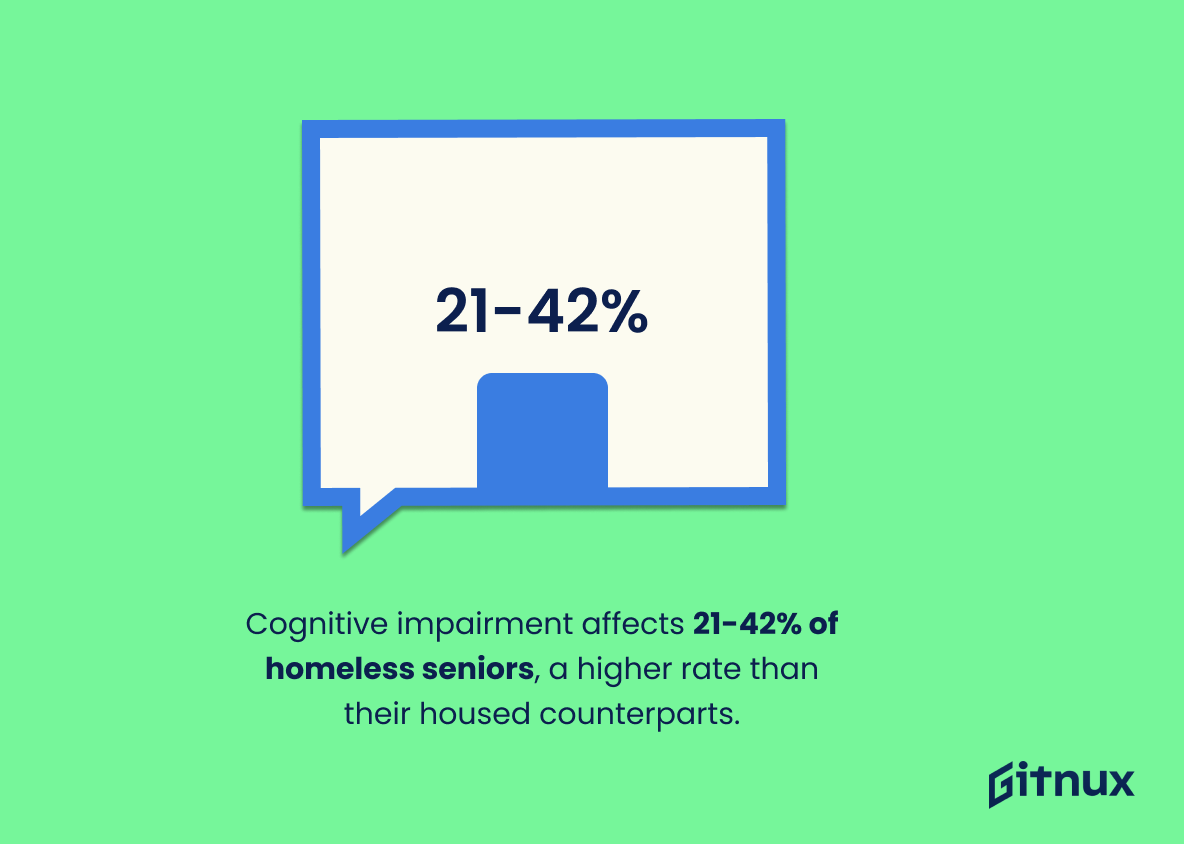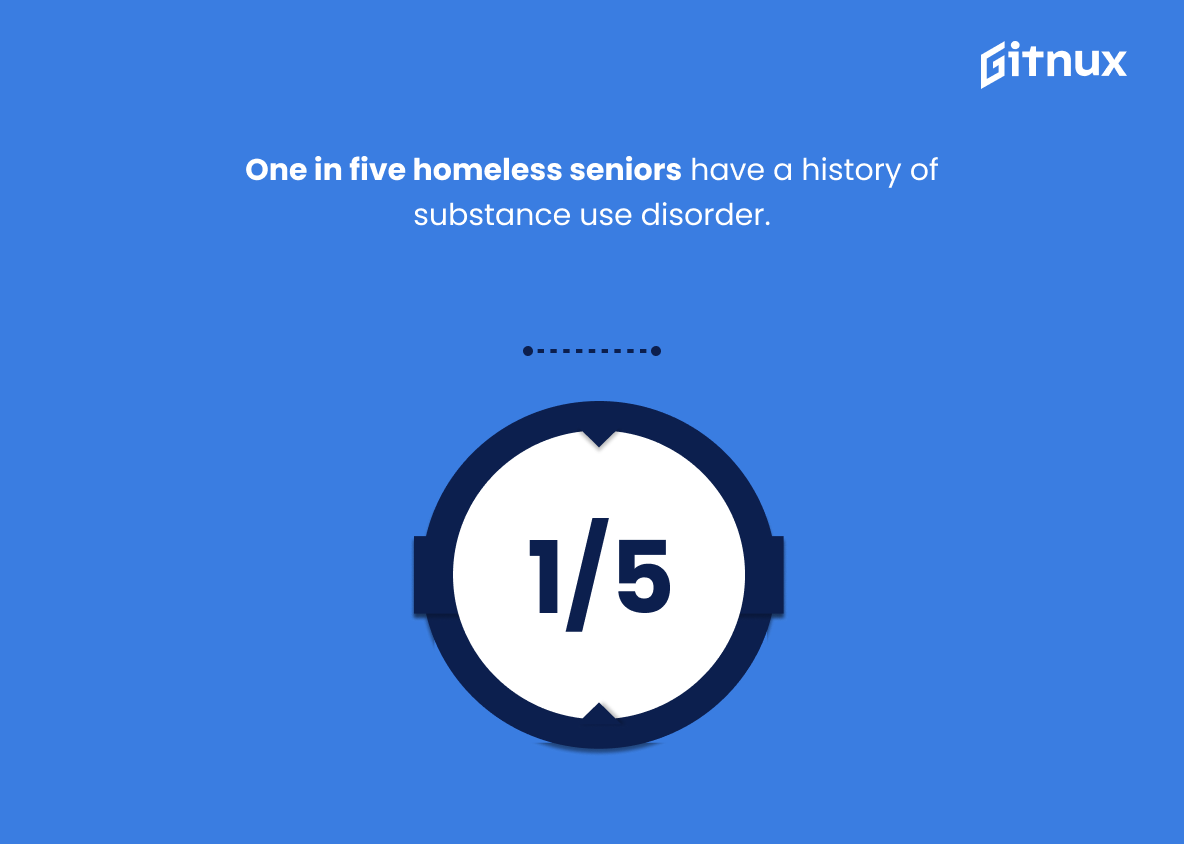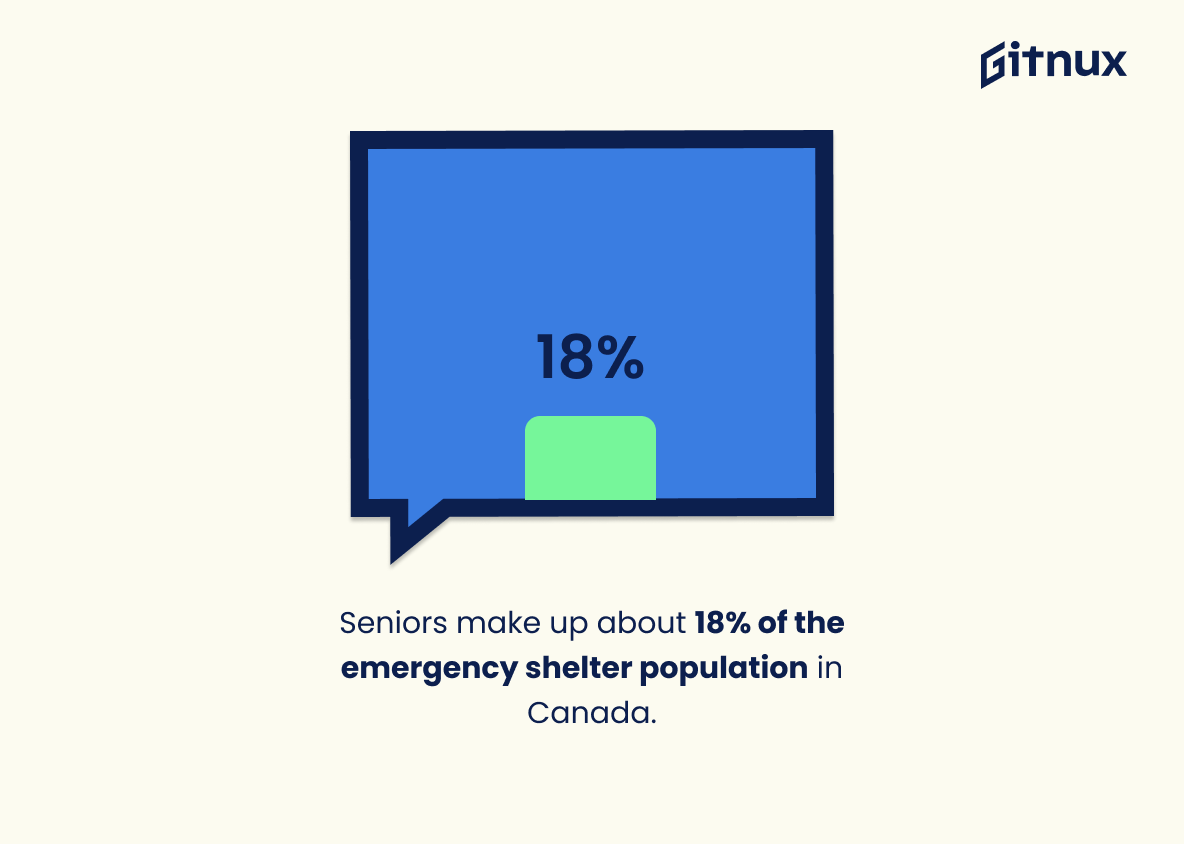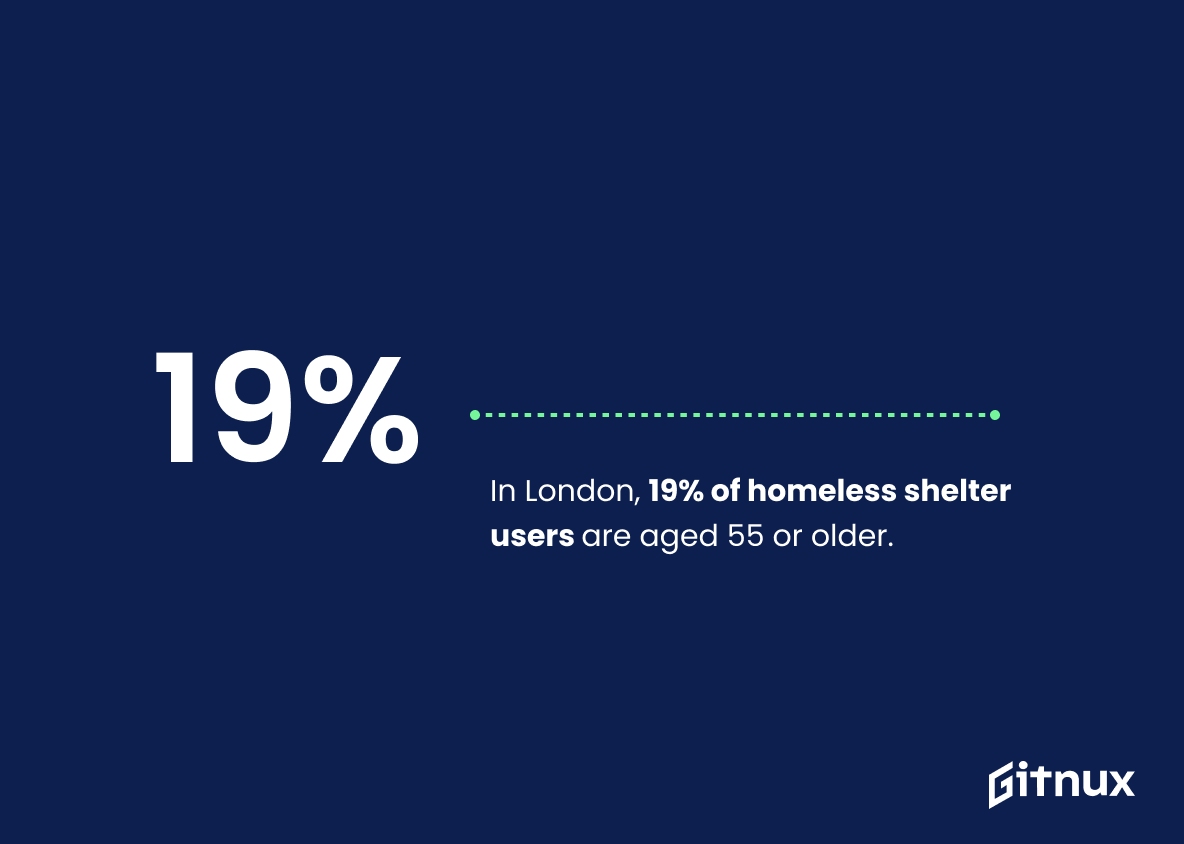The statistics on homeless senior citizens are alarming. Approximately 50% of the homeless population is over the age of 50, and 75% have significant health problems such as arthritis, hypertension, or ulcers. By 2030, it’s expected that this number will nearly triple. Senior citizens who experience homelessness also have a mortality rate 3-4 times higher than their housed counterparts. Around 30% of homeless seniors have a mental health condition and 39% experienced homelessness for the first time in their lives after turning 50 years old. Additionally, 53% of homeless seniors are African American despite accounting for only 12 percent of the total U.S senior population while 21.8 percent were aged 51 or older in 2020 according to USICH data reports . A lack of affordable housing accounts for 47 percent elder homelessness with an average monthly income at $853 reported by HOPE Home in 2016; 5476 older adults experiencing homelessness was recorded within Los Angeles County alone during 2018; one out five elderly individuals having history substance use disorder; 6 % general population being 62+ year olds ; 18 % emergency shelter users from Canada ; 19 % London’s shelter user 55+ years old ,and finally around 30 % reporting abuse throughout lifetime respectively These facts demonstrate how vulnerable our aging populations can be when faced with economic hardship and limited resources available to them due to ageism and other factors contributing towards poverty among elders today
This statistic is a stark reminder of the reality that a large portion of the homeless population is made up of senior citizens. It highlights the need for more resources and support for this vulnerable population, as well as the need for greater awareness of the issue.
About 75% of homeless senior citizens have significant health problems such as arthritis, hypertension, or ulcers.
This statistic is a stark reminder of the physical toll that homelessness can take on senior citizens. It highlights the need for increased access to medical care and support services for this vulnerable population. It also serves as a call to action for those who are in a position to help, as it demonstrates the urgent need for assistance.
Homeless Senior Citizens Statistics Overview
Senior citizens who experience homelessness have a mortality rate 3-4 times higher than their housed counterparts.
This statistic serves as a stark reminder of the dire consequences of homelessness for senior citizens. It highlights the urgent need for resources and support to help those who are most vulnerable in our society. It is a call to action to ensure that our elderly population is not left behind and that they have access to the care and assistance they need.
Around 30% of homeless seniors have a mental health condition.
This statistic is a stark reminder of the reality that many homeless seniors face. It highlights the fact that mental health issues are a major factor in the lives of those who are homeless, and that these issues need to be addressed in order to help these individuals. It also serves as a call to action, urging us to take steps to ensure that homeless seniors have access to the resources they need to manage their mental health conditions.
About 53% of homeless seniors are African American despite accounting for only 12% of the total U.S. senior population.
This statistic is a stark reminder of the disproportionate impact homelessness has on African American seniors. Despite making up only 12% of the total U.S. senior population, African American seniors account for more than half of all homeless seniors. This highlights the need for greater awareness and action to address the issue of homelessness among African American seniors.
In 2020, 21.8% of all individuals experiencing homelessness in the United States were aged 51 or older.
This statistic serves as a stark reminder of the reality that homelessness is not just a problem for young people, but for those of all ages. It highlights the fact that senior citizens are increasingly vulnerable to homelessness, and that this is an issue that needs to be addressed.
A lack of affordable housing accounts for 47% of elder homelessness.
This statistic is a stark reminder of the reality that many elderly individuals face: a lack of affordable housing is a major contributing factor to elder homelessness. This statistic highlights the need for more affordable housing options for seniors, as well as other resources to help them stay off the streets.
In 2013, about 4% of senior citizens in homeless shelters were veterans.
This statistic is a stark reminder of the reality that many veterans, who have served their country, are now facing homelessness. It is a sobering reminder of the need to provide support and assistance to those who have served in the military and are now in need of help. It is a call to action to ensure that veterans are not forgotten and that they receive the support they need to get back on their feet.
Homeless seniors have a higher rate of cognitive impairment compared to their housed counterparts, affecting 21-42% of the population.
This statistic is a stark reminder of the harsh reality that homeless seniors face. It highlights the fact that a significant portion of the homeless senior population is suffering from cognitive impairment, a condition that can have a profound impact on their quality of life. This statistic serves as a call to action, emphasizing the need for increased support and resources for homeless seniors in order to ensure that they are able to live with dignity and respect.
Over 60% of homeless older adults suffer from chronic health conditions.
This statistic is a stark reminder of the harsh reality that homeless older adults face. It highlights the fact that not only are they struggling to find a place to call home, but they are also dealing with chronic health conditions that can be difficult to manage without access to proper medical care. This statistic serves as a call to action to ensure that homeless seniors have access to the resources they need to stay healthy and safe.
5,476 older adults experienced homelessness in 2018 in the Los Angeles, California area.
This statistic is a stark reminder of the reality of homelessness among older adults in the Los Angeles area. It highlights the need for more resources and support for this vulnerable population, and serves as a call to action for those who are able to help.
One in five homeless seniors have a history of substance use disorder.
This statistic is a stark reminder of the prevalence of substance use disorder among homeless seniors, highlighting the need for more resources and support for this vulnerable population. It is a call to action for those who are in a position to help, to ensure that homeless seniors have access to the care and services they need to address their substance use disorder and other issues.
Homeless seniors have a 14% higher risk of being victimized compared to younger homeless individuals.
This statistic is a stark reminder of the vulnerability of homeless seniors, who are more likely to be targeted for victimization than their younger counterparts. It highlights the need for increased awareness and protection of homeless seniors, who are often overlooked in the fight against homelessness. This statistic serves as a call to action for those who are in a position to help, to ensure that homeless seniors are not left behind in the struggle for safety and security.
Seniors make up about 18% of the emergency shelter population in Canada.
This statistic is a stark reminder of the reality that senior citizens are disproportionately represented in the emergency shelter population in Canada. It highlights the need for more resources and support for homeless seniors, as well as a greater awareness of the issue.
In London, 19% of homeless shelter users are aged 55 or older.
This statistic serves as a stark reminder of the reality of homelessness among senior citizens in London. It highlights the fact that a significant portion of the homeless population is made up of individuals who are in their later years of life, and who are in need of assistance and support. This statistic is a call to action, urging us to take steps to ensure that our elderly citizens are not left to fend for themselves on the streets.
Conclusion
The statistics presented in this blog post demonstrate the alarming prevalence of homelessness among senior citizens. Approximately 50% of the homeless population is over the age of 50, and by 2030 that number is expected to nearly triple. Furthermore, 75% have significant health problems such as arthritis or hypertension, 21-42% suffer from cognitive impairment, and 30% have a mental health condition. Additionally, 39% experienced homelessness for the first time after turning fifty years old while 53%, 5476 individuals in Los Angeles alone in 2018, are African American despite accounting for only 12 percent of total U.S seniors population; 6 percent were veterans; one fifth had substance use disorder history; 18 percent make up emergency shelter populations in Canada; 19 percent are aged 55 or older living on London’s streets and around 30 reported experiencing abuse at some point during their lifetime. These numbers highlight how vulnerable elderly people can be when it comes to becoming homeless due to lack of affordable housing (47%), poverty (average monthly income $853) and other factors like physical disability or illness which increase mortality rate 3-4 times higher than housed counterparts’. It is clear that more needs to be done both nationally and internationally if we want our aging population not just survive but thrive with dignity into their golden years
References
0. – https://www.www.va.gov
1. – https://www.www.samhsa.gov
2. – https://www.www.ncbi.nlm.nih.gov
3. – https://www.www.nationalhomeless.org
4. – https://www.www.usich.gov
5. – https://www.www.lahsa.org
6. – https://www.www.forbes.com
7. – https://www.www.huduser.gov
8. – https://www.pubmed.ncbi.nlm.nih.gov
9. – https://www.www.crisis.org.uk
10. – https://www.www.americanbar.org
11. – https://www.www.justiceinaging.org
12. – https://www.ojp.gov
13. – https://www.www150.statcan.gc.ca
